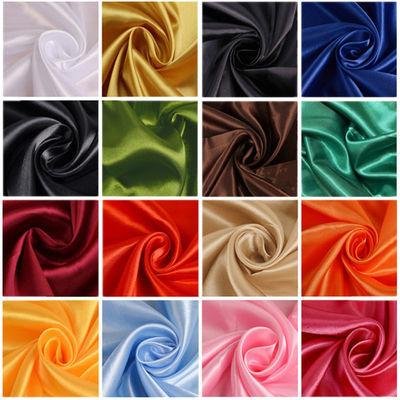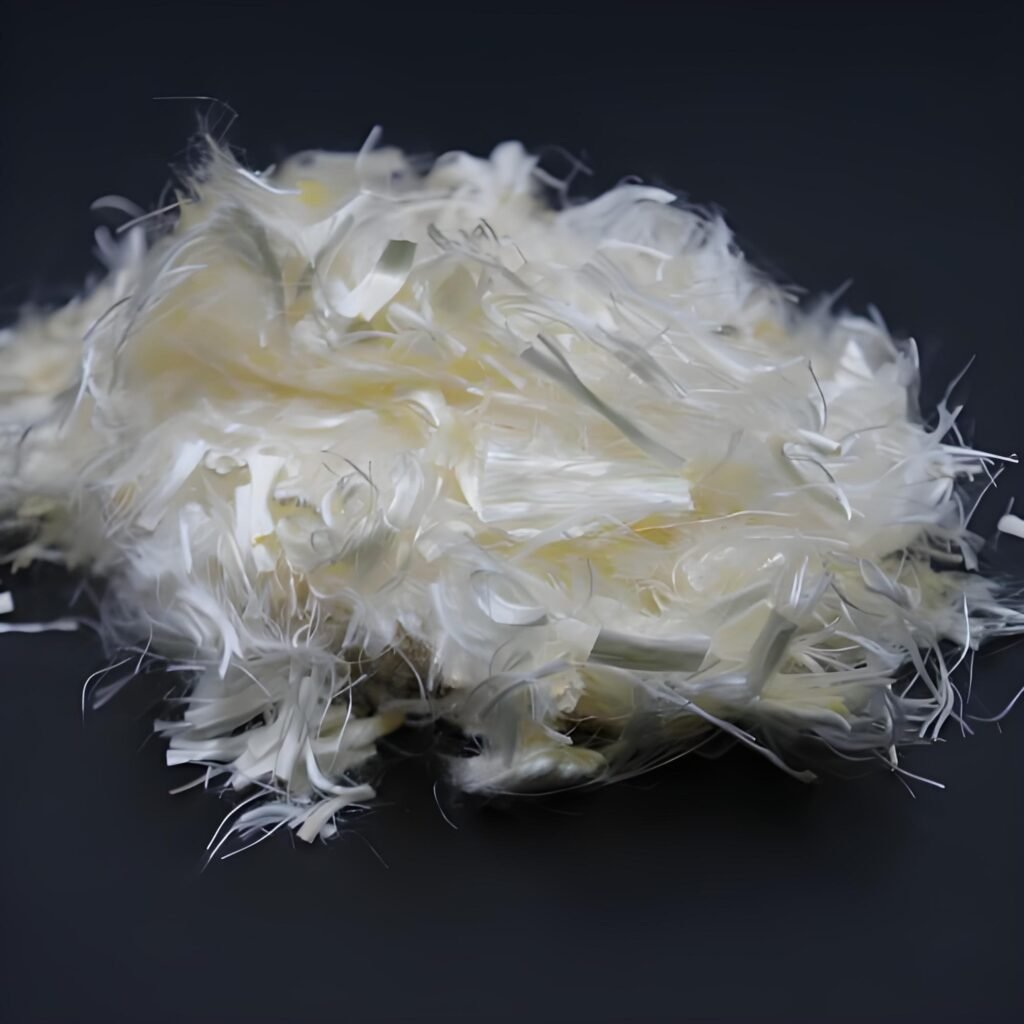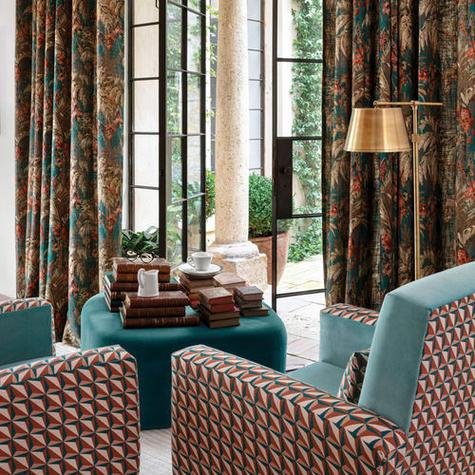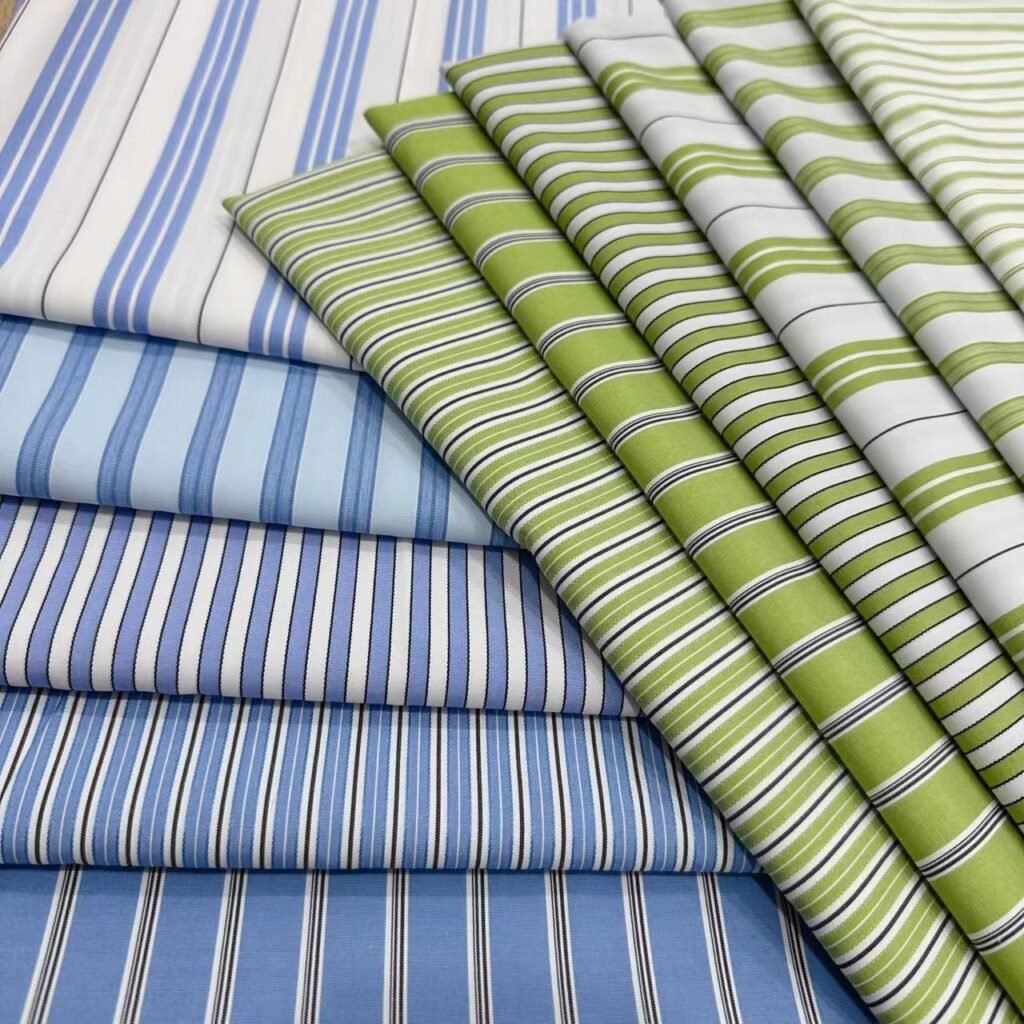Fabrics shape our lives—clothing, home décor, industrial materials, and even medical textiles. From the breathable comfort of cotton to the high‑tech performance of microfiber, each fabric tells a story of fibers, weaves, and treatments. Choosing the right material can elevate a garment’s look, performance, and longevity.
Fabrics fall into natural (cotton, silk, wool, linen), synthetic (polyester, nylon, acrylic), and blends. Natural fibers excel in comfort and breathability; synthetics lead in durability, shape retention, and specialized functions. Blends combine the best of both, tailoring weight, stretch, and care. This guide breaks down categories, comfort factors, performance traits, specialized uses, sustainability, and care practices—helping you match fiber to function for any project.
Once, a designer at a Paris couture house nearly shelved her collection until we swapped a heavy jacquard for an innovative bio‑nylon jacquard—lightening weight by 40% and cutting production time in half. Stick around to learn how fabrics can transform your next creation!
What Are the Main Categories of Fabrics?

Fabrics can be broadly categorized into three families:
Natural Fabrics: Harvested from plants or animals (cotton, linen, silk, wool). Renowned for breathability and comfort; often biodegradable but may require more care and have variability in strength.
Synthetic Fabrics: Man‑made polymers (polyester, nylon, acrylic). Engineered for durability, wrinkle resistance, and specialized properties like moisture‑wicking or stain repellence. Typically lower water footprint but shed microplastics.
Blends: Combinations (e.g., 60/40 cotton/polyester) that tailor performance: comfort plus strength, absorbency plus quick‑dry, or affordability plus luxury hand feel. Blends dominate mass‑market apparel and technical textiles, balancing cost, care, and performance.
Each category serves unique end‑uses:
- Natural: T‑shirts, bedding, high‑end suiting.
- Synthetic: Activewear, outerwear, upholstery.
- Blends: School uniforms, workwear, wrinkle‑free shirts.
Understanding these categories helps you navigate fabric selection—prioritizing comfort, performance, sustainability, or cost. For instance, a silk blouse (natural) breathes well but costs more and needs gentle care; a polyester blouse (synthetic) resists wrinkles and washing but may trap odor; a silk/poly blend merges sheen with resilience.
- Fiber Structure & Source Cotton: Cellulose-based, 20–30 mm staple length Polyester: PET chains, continuous filaments Blends: Yarn spinning techniques
- Environmental Trade‑offs Water Use: Cotton \~10,000 L/kg vs. polyester \~30 L/kg Biodegradability: Natural vs. microplastic shedding
- Cost & Availability Raw Material Costs: Silk > wool > cotton > synthetics Global Production: Polyester 55% of global fiber market
| Category | Examples | Key Traits | Common Uses |
|---|---|---|---|
| Natural | Cotton, silk, wool, linen | Breathable, soft, bio‑degradable | Apparel, bedding |
| Synthetic | Polyester, nylon, acrylic | Durable, wrinkle‑resistant, moisture‑wicking | Activewear, upholstery |
| Blends | Cotton/polyester, wool/nylon | Balanced performance & cost | Uniforms, workwear |
Which Natural Fabrics Offer the Best Comfort and Breathability?
Among natural fibers, cotton, linen, silk, and wool each bring unique comfort:
- Cotton: Absorbs up to 8 g water/g fiber, soft hand, machine‑washable; ideal for T‑shirts, underwear, and bedding.
- Linen: Flax‑based, excellent moisture wicking and air permeability (200 L/m²/s), crisp drape; perfect for summer shirts and table linens.
- Silk: Protein fiber, luxury luster, thermoregulating—warm in cold, cool in heat; for high‑end dresses, scarves, and linings.
- Wool: Crimped fibers trap air for insulation, moisture management (\~30% moisture regain), naturally odor‑resistant; used in knitwear, suiting, and blankets.
Comfort factors include moisture regain, thermal conductivity, and hand feel. Linen’s open weave and flax structure make it the coolest natural fabric, while silk’s smooth surface feels luxurious against skin. Wool’s crimp creates loft and warmth even when damp, making it ideal for year‑round use. Cotton strikes a balance—affordable softness with easy care, but wrinkles easily and can shrink. Selecting the right natural fiber depends on climate, use case, and care willingness.
- Moisture Regain & Thermal Comfort Cotton: 8% regain; k ≈ 0.04 W/m·K Linen: 12% regain; k ≈ 0.06 W/m·K Silk: 11% regain; k ≈ 0.05 W/m·K Wool: 30% regain; k ≈ 0.035 W/m·K
- Durability & Care Silk: Delicate, dry‑clean Linen: Starchable, wrinkles
- Cost & Luxury Perception Silk cost index: 3× cotton Linen: 1.5× cotton
| Fabric | Moisture Regain | Thermal Cond. | Care Level | Relative Cost |
|---|---|---|---|---|
| Cotton | 8% | 0.04 | Easy | 1× |
| Linen | 12% | 0.06 | Moderate | 1.5× |
| Silk | 11% | 0.05 | Delicate | 3× |
| Wool | 30% | 0.035 | Moderate | 2× |
How Do Synthetic Fabrics Differ in Performance and Durability?

Synthetic fabrics—polyester, nylon, acrylic, spandex—excel in durability, shape retention, and specialized functions:
- Polyester (PET): Tensile 6–7 cN/dtex, abrasion 40,000+ Martindale cycles, low moisture absorption (0.4 g/g), quick‑dry; used in activewear, outerwear, upholstery.
- Nylon: High tenacity (70 cN/tex), elastic recovery, smooth hand; for hosiery, technical fabrics, parachutes.
- Acrylic: Wool‑like warmth, good UV resistance, 20,000 abrasion cycles; in knitwear and blankets.
- Spandex (Elastane): 20× stretch, rapid recovery; essential for stretch garments, compression wear.
Synthetics outperform natural fibers in wash‑fastness, abrasion, and uniformity. However, they can trap odors, shed microplastics (700,000 fibers/wash), and feel less breathable unless engineered as micro‑meshes. Performance finishes—anti‑odor, DWR, UV stabilizers—further enhance functionality. Choosing synthetics involves weighing performance gains against environmental impact and potential comfort trade‑offs.
- Strength & Abrasion Polyester: 6–7 cN/dtex; Martindale > 40,000 Nylon: 7–8 cN/dtex; spring recovery > 90%
- Moisture & Drying Polyester: Dries in 5–10 min Spandex: 0.3 g/g absorption; shape retention
- Environmental Notes Microplastics: 700K fibers/wash Recycled Options: rPET cuts CO₂ 50–70%
| Fiber | Tenacity (cN/dtex) | Abrasion (cycles) | Absorbency | Special Feature |
|---|---|---|---|---|
| Polyester | 6–7 | > 40,000 | 0.4 g/g | Quick‑dry, wrinkle‑free |
| Nylon | 7–8 | 30,000 | 4 g/g | Elastic recovery |
| Acrylic | 3–4 | 20,000 | 2 g/g | Wool‑like warmth |
| Spandex | N/A (stretch fiber) | N/A | 0.3 g/g | 20× stretch |
What Fabrics Are Ideal for Activewear and Sports Apparel?
Activewear demands fabrics that wick moisture, stretch freely, and endure repeated laundering. Polyester‑spandex blends (e.g., 85/15) provide excellent stretch recovery (up to 90% over 100 cycles) and moisture wicking (\~ 25 g/m²·h). Nylon‑elastane blends offer superior abrasion resistance (30,000 Martindale cycles) and smooth “next‑to‑skin” feel. Polypropylene is ultra‑hydrophobic, shedding sweat instantly, while merino wool—a natural option—balances odor control and temperature regulation in cooler climates. Consider weight (100–200 gsm for tops, 200–300 gsm for leggings), breathability (> 300 L/m²/s air permeability), and UV protection (UPF 30+ for outdoor sports).
- Fiber & Blend Performance Polyester/Elastane (85/15): Stretch recovery 90%, wicking 25 g/m²·h, dries < 10 min. Nylon/Spandex (80/20): Abrasion ≥ 30,000 cycles, smooth hand, quick-dry. Merino Wool: Moisture regain 30%, natural antimicrobial, thermoregulating.
- Fabric Constructions Interlock Knit: 180 gsm, opaque, two‑way stretch for leggings and compression. Mesh Panels: 100 gsm, 50% open area, boosts ventilation in high‑heat zones.
- Special Finishes Anti‑odor: Silver‑ion or QAS treatments reduce bacterial growth by 99% over 30 washes. DWR: PFC‑free coatings maintain breathability (> 80 L/m²/s) while repelling light rain.
| Fabric Type | GSM Range | Key Property | Typical Use |
|---|---|---|---|
| Polyester/Spandex | 120–200 | High stretch, wicking | Tops, sports bras |
| Nylon/Spandex | 150–250 | Abrasion resistance | Leggings, shorts |
| Polypropylene | 100–150 | Hydrophobic, fast-dry | Swimwear, base layers |
| Merino Wool | 150–250 | Odor control, temperature | Hiking, cold-weather |
Which Fabrics Work Best for Home Textiles and Upholstery?

Home textiles prioritize comfort, durability, and ease of care. Cotton‑polyester blends (65/35) offer softness plus wrinkle resistance for sheets and pillowcases. Microfiber polyester (200–300 gsm) resists stains and dries quickly—ideal for bath towels. Velvet and chenille (polyester/acrylic blends) provide plush texture for upholstery, with Martindale ratings > 30,000 cycles for high‑traffic furniture. Canvas and twill cotton (300–400 gsm) withstand abrasion for slipcovers and outdoor cushions. Weight, rub count, and colorfastness guide fabric choice to match usage intensity and aesthetic.
- Bed & Bath Sheets: Cotton percale (200 TC) vs. cotton/poly (60/40) blends—blend shrinks ≤ 1%, dries 30% faster. Towels: Microfiber vs. cotton terry—microfiber absorbs 4 × its weight, quick‑dry in 1 hr vs. 3 hrs.
- Upholstery Fabrics Velvet (60% polyester/40% cotton): Martindale ≥ 30,000, soft hand, stain‑resistant finish. Canvas/Twill: 350 gsm, abrasion ≥ 40,000 cycles, UV‑resistant treatments for outdoor use.
- Window Treatments Linen Blends: 30% linen/70% cotton, light control with airflow 150 L/m²/s. Blackout: Polyester backing blocks 99% light, flame retardant to CPAI‑84 standards.
| Application | Fabric Blend | GSM / TC | Durability | Care |
|---|---|---|---|---|
| Bed Sheets | 60/40 Cotton/Poly | 200 TC | Shrink ≤ 1% | Machine wash |
| Bath Towels | 100% Microfiber | 250 gsm | Quick‑dry | Tumble low |
| Upholstery | 60/40 Velvet Blend | 300 gsm | Martindale ≥ 30k | Spot clean |
| Slipcovers | Cotton Canvas | 350 gsm | Martindale ≥ 40k | Machine wash |
How Do Technical and Industrial Fabrics Serve Specialized Applications?
Technical fabrics are engineered for strength, filtration, insulation, and safety. Aramid fibers (Kevlar®, 5 cN/dtex) provide cut resistance and heat stability (up to 400 °C) for protective gear. PTFE‑coated fabrics (e.g., Gore‑Tex®) are breathable yet waterproof (10,000 mm hydrostatic head). Industrial nylons (6,6) with denier 120–500 deliver tensile strength > 70 cN/tex in conveyor belts. Nonwovens like spunbond polypropylene filter 99.9% of particulates ≥ 0.3 µm, key in medical masks. Selecting technical textiles involves balancing mechanical properties, chemical resistance, and regulatory compliance.
- Protective Textiles Aramids: Tensile 5 cN/dtex, thermal stability 400 °C, used in body armor and firefighting. UHMWPE: 8 cN/dtex, lightweight, for cut‑resistant gloves.
- Waterproof/Breathable PTFE Laminate: Hydrostatic head 10,000 mm, MVTR 10,000 g/m²·24 h. PU Coatings: 5,000 mm/5,000 g rating; cheaper but shorter lifespan.
- Filtration & Insulation Meltblown Nonwovens: 99.9% filtration @0.3 µm, basis weight 25–50 gsm. Insulation Batting: Polyester batting 300 gsm R‑value 3.0 per inch.
| Application | Fabric Type | Key Metric | Typical Use |
|---|---|---|---|
| Protective Gear | Kevlar® | 5 cN/dtex, 400 °C heat | Body armor, firefighting |
| Outdoor Membranes | PTFE Laminate | 10,000 mm/10,000 g | Rainwear, tents |
| Filtration | Spunbond/MB Nonwovens | 99.9% @0.3 µm | Masks, HVAC |
| Conveyor/Belting | Nylon 6,6 | > 70 cN/tex tensile | Industrial belts |
What Are Eco-Friendly and Sustainable Fabric Options?

Sustainability spans organic, recycled, and rapidly renewable fibers. Organic cotton (GOTS‑certified) avoids synthetic agrochemicals, saving up to 90% of water via rain‑fed practices. Recycled polyester (rPET) cuts CO₂ emissions by 50–70% and repurposes PET bottles. Lyocell (Tencel®) uses closed‑loop solvent spinning from wood pulp, with 98% solvent recovery. Hemp requires 50% less water than cotton and enriches soil. Bamboo viscose—if manufactured responsibly—offers silky softness. Evaluate certifications (GOTS, GRS, FSC) and consider end‑of‑life biodegradability vs. recyclability to minimize footprint.
- Organic Fibers Organic Cotton: 1,700 kg/ha vs. 2,500 kg/ha conventional; water use 1,000 L/kg vs. 10,000 L/kg. Hemp: 2,000 kg/ha yield; nitrogen‑fixing, minimal pesticides.
- Regenerated Cellulosics Lyocell: 0.3 L water/g fiber; closed‑loop NMMO process. Modal: Soft hand, high wet strength.
- Recycled Synthetics rPET: 1 kg rPET = 0.8 kg CO₂e vs. 3 kg for virgin; quality parity. Recycled Nylon: ECONYL® from fishing nets, –90% CO₂.
| Sustainable Option | Water Use (L/kg) | CO₂ Reduction | Certification |
|---|---|---|---|
| Organic Cotton | 1,000 | Baseline | GOTS |
| Hemp | 500 | N/A | Global Hemp Cert. |
| Lyocell (Tencel®) | 20 | –40% vs. viscose | FSC, Lenzing Full‑Loop |
| Recycled Polyester | 30 | –70% vs. virgin | GRS |
| Recycled Nylon | 30 | –90% vs. virgin | GRS |
How Do You Choose the Right Fabric for Your Project?
Selecting fabric hinges on end‑use, performance, cost, and care. For summer dresses, prioritize breathability (air permeability > 200 L/m²/s) and drape (bending rigidity < 0.5 mN·m). For workwear, look for tensile strength > 5 cN/dtex and easy care (polyester blends). To accentuate a slim silhouette, choose fabrics with vertical drape and slight sheen—crepe, rayon—while matte, structured fabrics like twill create a leaner look. Luxury appeal can come from silk satin (20 mm thick, high luster) or cashmere (fiber diameter < 19 µm). Always balance aesthetic, function, and budget.
- Performance Metrics Drape Coefficient: Lower for fluid fabrics (e.g., chiffon \~ 0.2). Tensile/Elongation: Affects durability and comfort.
- Visual Effects Sheen & Hand: Silk satin vs. matte cotton poplin. Texture: Seersucker’s puckered weave hides imperfections.
- Budget & MOQ Cost per Meter: Cotton \$3–5, silk \$30–50, synthetics \$1–3. MOQ Considerations: SzoneierFabrics offers as low as 1 kg.
| Criterion | Metric | Ideal Range | Example Fabric |
|---|---|---|---|
| Air Permeability | L/m²/s | > 200 | Linen, Voile |
| Drape Coefficient | mN·m | < 0.5 | Chiffon, Silk |
| Tensile Strength | cN/dtex | > 5 | Twill, Canvas |
| Cost | USD/m | 1–50 | Synthetics–Silk |
What Care and Maintenance Practices Preserve Fabric Performance?
Proper care extends fabric life: wash cotton at ≤ 40 °C to reduce shrinkage; linen at cold cycle to preserve fibers; silk dry‑clean or hand‑wash with pH‑neutral detergent; wool at wool cycle with lanolin‑friendly soap. Synthetic sports fabrics benefit from cool wash and air‑dry to maintain elasticity and finishes. Always turn garments inside‑out, use mesh bags for delicates, and avoid fabric softeners on moisture‑wicking textiles. For spills, prompt spot‑cleaning—3% hydrogen peroxide for protein stains on natural fibers—prevents permanent damage.
- Temperature & Detergent Cotton: 40 °C, mild detergent; shrinkage 1–2%. Wool: 30 °C wool cycle; shrinkage < 5%. Polyester: 60 °C safe; resistant to color fade.
- Drying & Ironing Air‑Dry: Extends fabric life by 20%. Iron Settings: “Synthetic” for blends; “Silk” for delicate fibers.
- Storage Moths: Cedar blocks for wool. Pilling: Shave knits after 10+ washes.
| Fabric | Wash Temp | Drying Method | Iron Setting |
|---|---|---|---|
| Cotton | ≤ 40 °C | Air or tumble low | Cotton/linen |
| Silk | Hand‑wash | Line‑dry | Silk/low heat |
| Wool | 30 °C | Flat dry | Steam only |
| Polyester | ≤ 60 °C | Tumble low | Synthetic/medium |

